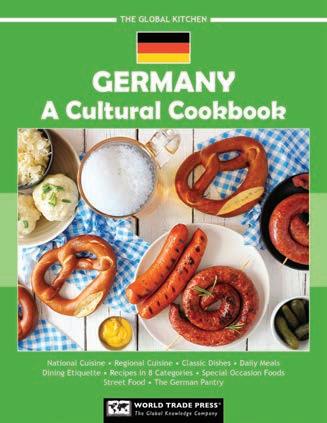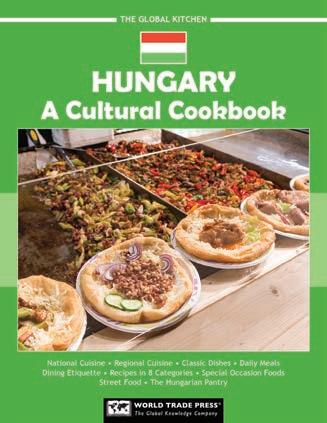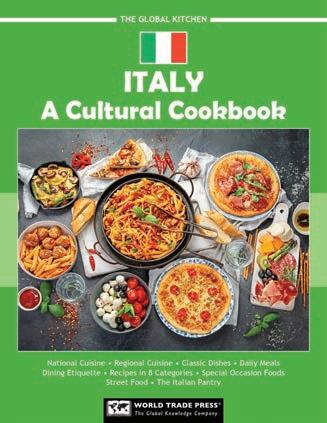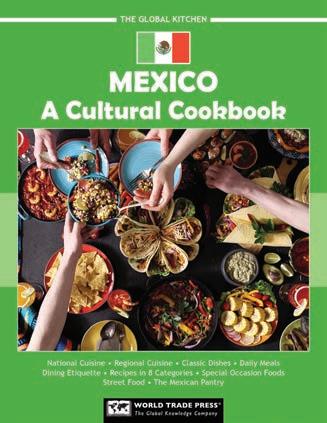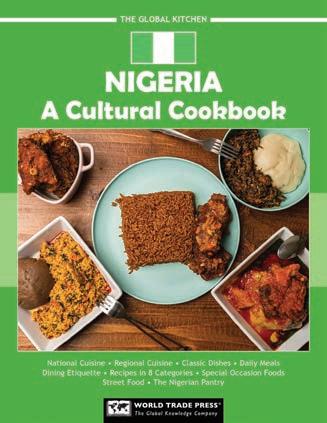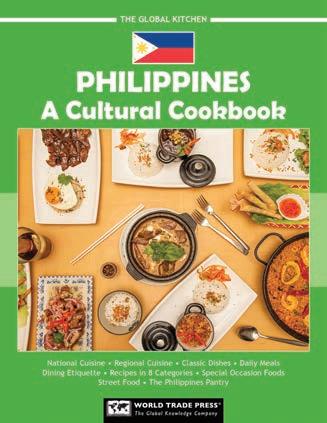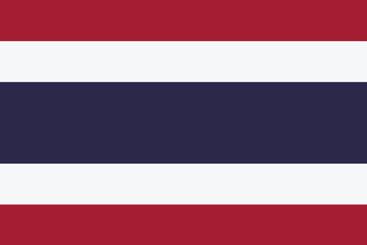

A Cultural Cookbook
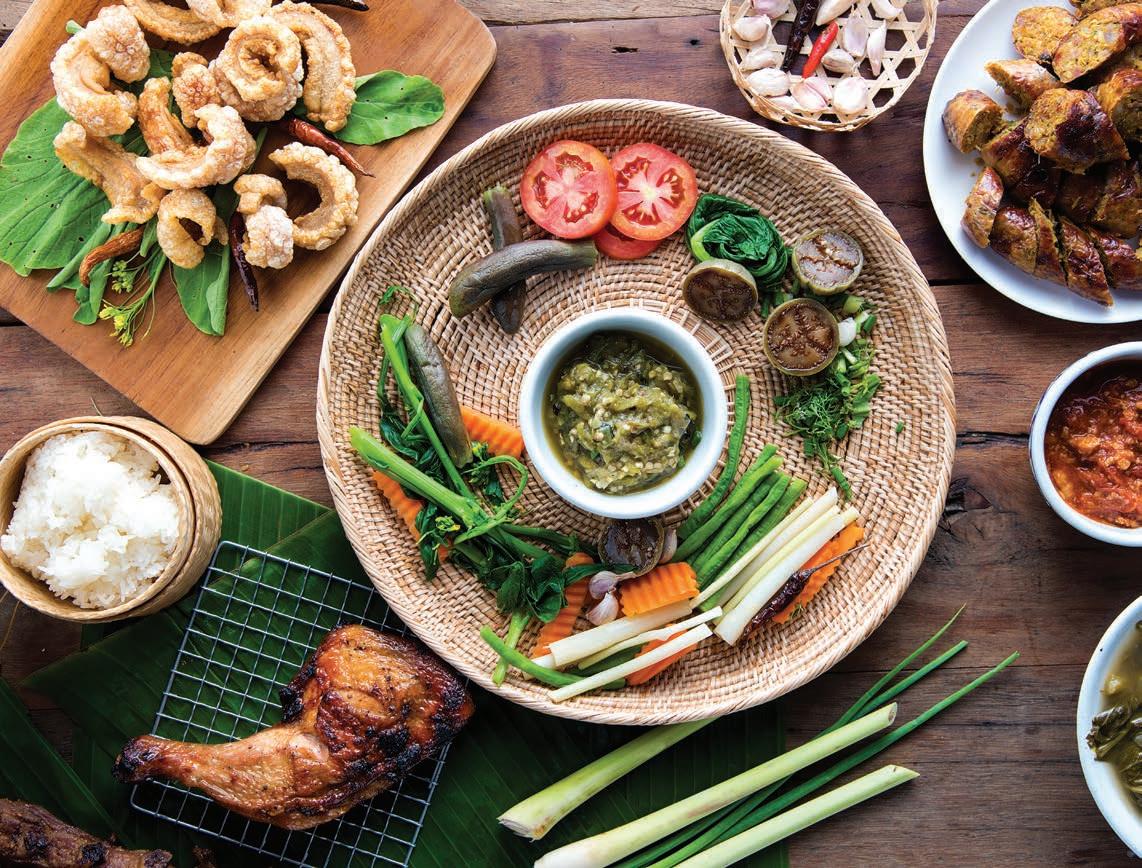
National Cuisine • Regional Cuisine • Classic Dishes • Daily Meals
Dining Etiquette • Recipes in 8 Categories • Special Occasion Foods Street Food • The Thai Pantry
SPECIAL OCCASION FOODS
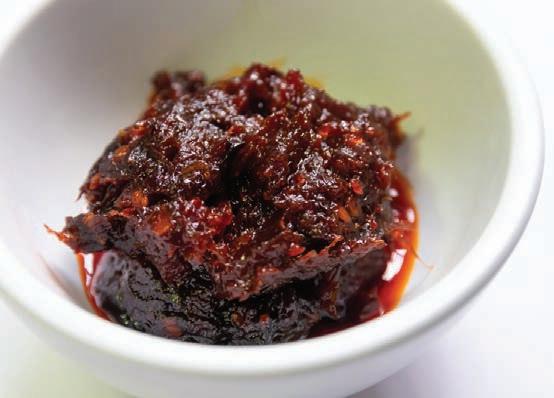
PHEE HOM (Ghost Festival)
Phee Hom is a traditional festival celebrated in the north of Thailand, where locals honor the spirits of the deceased through rituals and offerings. Also known as the Ghost Festival, the event involves gathering and preparing special foods such as khao tom mat (a mixture of sticky rice, banana, and coconut milk wrapped in banana leaves and steamed), nam prik (a spicy chili sauce), and seasonal fruits. Food offerings are placed at shrines and shared among family members.
the ancestors and the desire to share blessings, with meals that are an integral part of rituals and communal gatherings.
LIST OF RECIPES
1. Ajad (Cucumber Salad)
2. Gaeng Daeng Gai (Red Curry with Chicken)
3. Gaeng Jued Woon Sen (Clear Soup with Glass Noodles)
4. Gaeng Keow Wan Gai (Green Curry with Chicken)
5. Gaeng Phed Fakthong (Red Curry Pumpkin Soup)
6. Gai Hor Bai Toey (Pandan-Wrapped Chicken)
7. Gai Pad Med Mamuang Himapan (Cashew Chicken)
8. Gai Yung (Grilled Chicken)
9. Gang Ped Faktong (Red Curry with Pumpkin)
10. Goong Pad Sataw (Stink Beans with Shrimp)
11. Green Curry Dinner Rolls
12. Kao Neo Dang (Sticky Rice Pudding)
13. Khanom Buang (Thai Crepes)
14. Khanom Krok (Coconut Pancakes)
15. Khanom Tuay Foo (Steamed Sponge Cakes)
16. Khao Mun (Coconut Rice)
17. Khao Mun Gai (Chicken and Rice)
18. Khao Neow Ma Muang (Mango Sticky Rice)
19. Khao Niew Turian (Sticky Rice with Durian)
20. Khao Pad Goong (Shrimp Fried Rice)
21. Khao Pad Poo (Crab Fried Rice)
22. Khao Pad Sapparod (Pineapple Fried Rice)
23. Khao Tom Goong (Rice Soup with Shrimp)
24. Khao Yum (Mixed Rice Salad)
25. Kluay Buat Chee (Bananas in Coconut Milk)
26. Kluay Tod (Fried Bananas)
27. Krupuk Udang (Prawn Crackers)
28. Kuay Teow Nua (Beef Noodle Soup)
29. Larb (Minced Meat Salad)
30. Larb Moo Tod (Spicy Fried Pork Meatballs)
31. Lime Shrimp
32. Mango Smoothie
33. Moo Nam Tok (Grilled Pork Salad)
34. Moo Tod Gratiem (Garlic Pepper Fried Pork)
35. Nua Yang Nam Tok (Waterfall Beef Salad)
36. Pad Hed Nang Rom (Stir-Fried Mushrooms)
37. Pad Kee Mao (Drunken Noodles)
38. Pad Kra Pao (Holy Basil Stir-Fry)
39. Pad Krapow Moo Sap (Basil Pork Stir-Fry)
40. Pad Ma Kheua (Eggplant Stir-Fry)
41. Pad See Ew (Stir-Fried Soy Sauce Noodles)
42. Pad Thai (Stir-Fried Rice Noodles)
43. Pa Tong Ko (Fried Dough Sticks)
44. Peek Gai Tod (Fried Chicken Wings)
45. Pla Neung Manao (Steamed Fish with Lime and Garlic)
46. Pla Pao (Thai Grilled Fish)
47. Poh Pia Tod (Fried Spring Rolls)
48. Poh Taek (Clear Seafood Soup)
49. Roti (Flatbread)
50. Saku Piak (Tapioca Pudding)
51. Sangkhaya (Coconut Custard)
52. Sangkhaya Faktong (Pumpkin Custard)
53. Satay Gai (Chicken Satay)
54. Som Tam (Green Papaya Salad)
55. Som Tam Mamuang (Green Mango Salad)
56. Sweet Chili Tofu
57. Tao Hoo Tod (Fried Tofu)
58. Tau Suan (Sweet Mung Bean Soup)
59. Thai Suki (Hot Pot)
60. Tod Man Pla (Fish Cakes)
61. Tod Mun Goong (Shrimp Cakes)
62. Tom Kha Gai (Coconut Chicken Soup)
63. Tom Kha Hed (Coconut Mushroom Soup)
64. Tom Kha Pak (Vegetable Coconut Soup)
65. Tom Yum (Hot and Sour Soup)
66. Tom Yum Goong (Hot and Sour Shrimp Soup)
67. Tua Dam Tom Kati (Black Soya Beans in Coconut Sauce)
68. Wun Gati Bai Tuey (Pandan Coconut Jelly)
69. Yam Pla (Fish Salad)
70. Yum Khai Dao (Fried Egg Salad)
71. Yum Nua (Beef Salad)
72. Yum Talay (Seafood Salad)
73. Yum Woon Sen (Glass Noodle Salad)
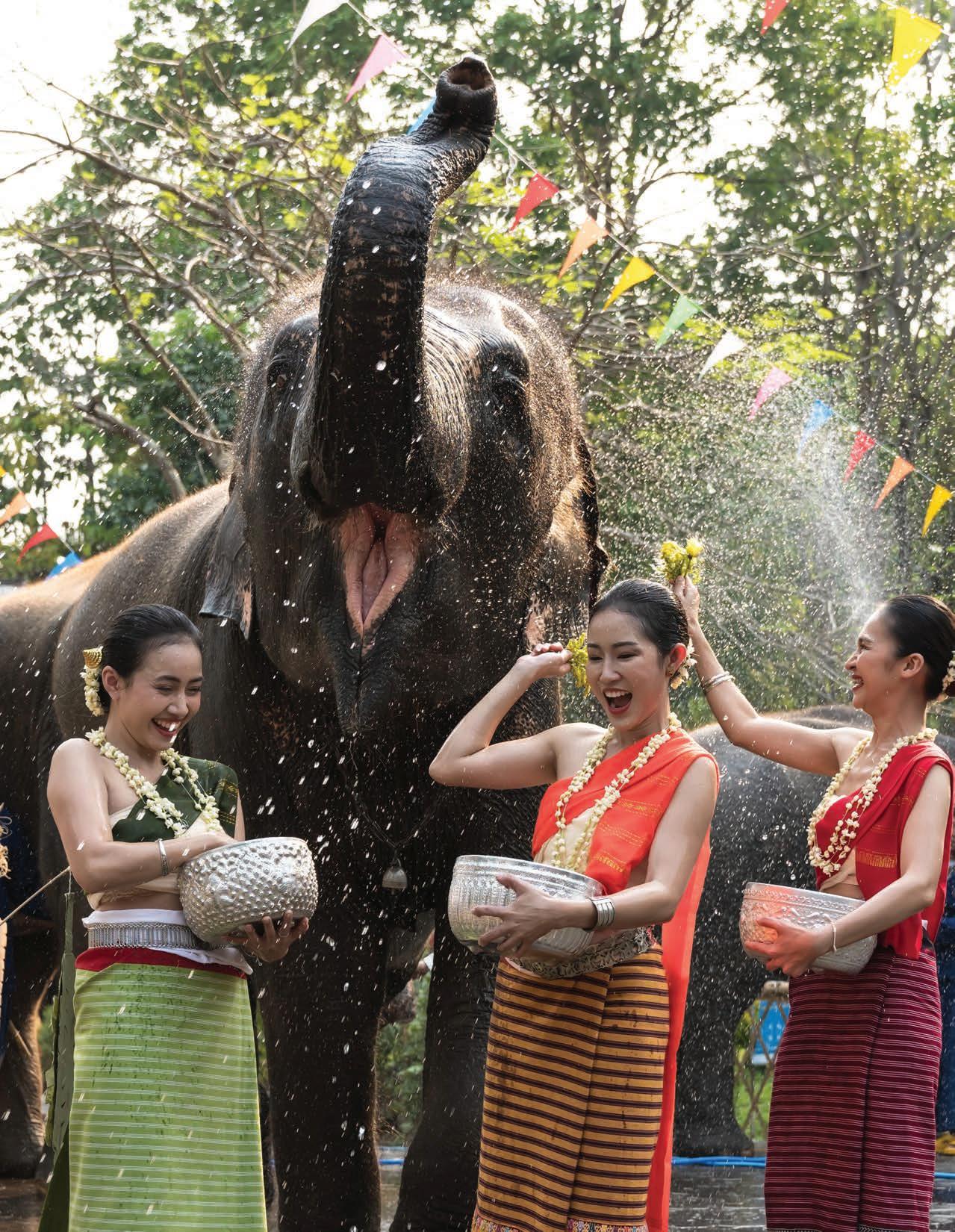
FOREWORD
Welcome! This cookbook presents a comprehensive, research-based examination of Thai cuisine, developed through more than 30 years of culinary study and documentation. Drawing from our extensive reference dahome cooks and professional chefs. It is designed as a cultural and culinary resource—focused not on personalland’s diverse food traditions. Thai cuisine is renowned for its complexity and balance, characterized by the dynamic interplay of sweet, India, China, Malaysia, and the West have blended with indigenous practices to form a cuisine that is both cosmopolitan and deeply rooted. From royal court dishes to street food stalls, and from Buddhist vegetarian trade, and cultural exchange.
This volume adheres to a format that emphasizes clarity, context, and historical grounding. Recipes are presented alongside background on regional variation, ingredient availability, and ritual or ceremonial function.
As with all books in this series, the approach is informational rather than anecdotal, prioritizing utility and depth for cooks, researchers, and educators alike. Thai food is a living tradition—layered, adaptive, and expressive of both local identity and international connection. This collection offers a structured lens through which to explore that tradition, grounded in careful research and designed to enrich understanding through the medium of food.

REGIONAL CUISINE
Central Thai cuisine is characterized by rich coconut-milk with chile-based dips. The staple is long-grained jasmine rice, though sticky rice is sometimes used in desserts. and fragrant herbs.
Tom Yum Goong – Embodying the dominant local culinary style of hot and sour, tom yum goong is a spicy, clear soup made with fresh herbs, shrimp, and vegetables.
Kaeng Khiao Wan Gai – Central Thailand is known for its green curry, which is made with fresh green chilies, shallots, garlic, galangal, and cilantro. The spiciness is balanced with sweet coconut milk, giving the dish a harmo-
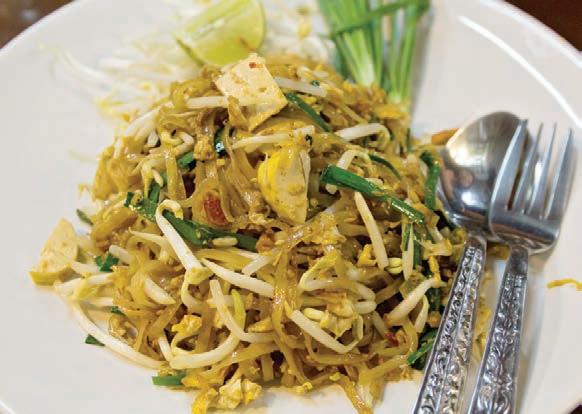
The Northern Region
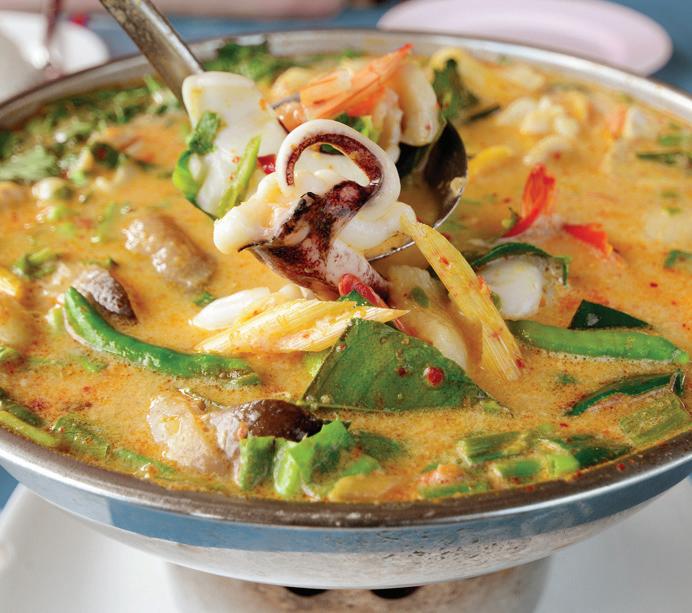
Pad Thai – One of the globally representative and most popular dishes of Thai cuisine, this sour and sweet noodle dish is believed to have been introduced to the Ayutthaya Kingdom by Chinese merchants. Over the years, the recipe replaced characteristically Chinese elements (rice noodles instead of wheat noodles, tofu instead of pork) and added decidedly Thai twist.
Khanom Maw Kaeng – The traditional recipe fornut milk, eggs, palm sugar, taro or sweet potato,tard dishes, the Thai version was served at the royal court to the delight of courtiers.
Northern Thailand is cool and mountainous, giving its cuisine a distinctly hearty and rustic character. The temperate climate has imparted the local cuisine with greater seasonality than elsewhere in Thailand. Neighboring Myanmar and southern China, as well as the numerous ethnic minorities and hill tribes in the area, have also left a mark on the local cuisine.
Dried spices and herbs are preferred over chile pepper. Sticky rice, along with other whole-grain rice varieties such as Thai red cargo rice, are the staple grains. Unique spices include makhwaen, a prickly ash seed related to Sichuan pepper that gives a slight numbing sensation, and thua nao khaep, a Shan seasoning paste made of fermented soybeans. This regional cuisine also makes heavy use of fermented and pickled ingredients, and meats are sometimes eaten raw. Typical dishes include dips and pastes, soups and salads, and grilled meats and vegetables.
Tom Yum Goong
Pad Thai
DAILY MEALS
Breakfast
Thai cuisine does not have typical dishes that are only eaten at breakfast, unlike in the West. Instead, a morning meal in Thailand usually consists of rice with leftovers from dinner the night before. Rice porridge, or congee, is also typical for breakfast, but it is also often eaten at lunch. Coffee is a popular breakfast drink, and it is usually served iced (owing to the warm climate), with milk and sugar.
Lunch
At midday, Thais generally eat a single noodle- or rice-based dish. Meals are typically served as individual portions and are not shared.
Dinner
Usually eaten in groups, dinner is the main meal of the day. Dinner is usually eaten after 7 p.m., once the sun has set and the midday heat has ebbed. A full dinner in Thailand typically includes several shared dishes, with soup, a salad, at least
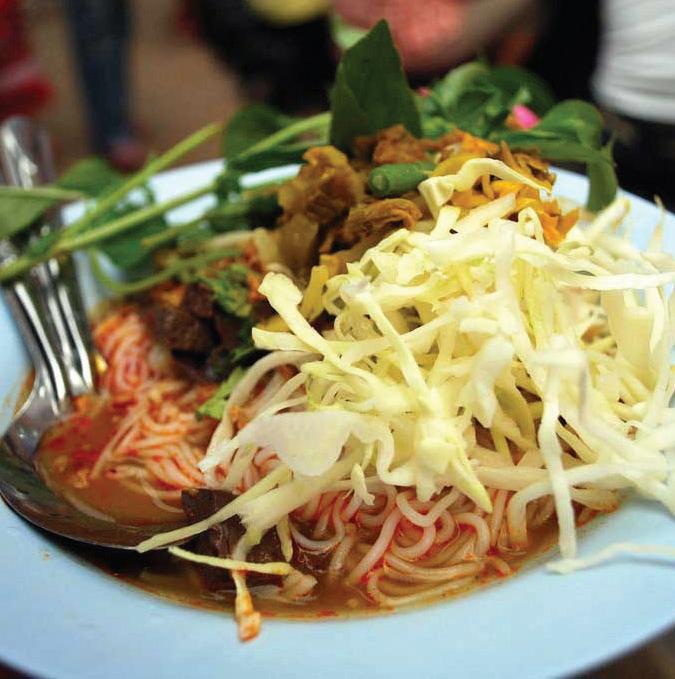
cooking—spicy, sweet, sour, bitter, and salty—to achieve balance throughout the meal.
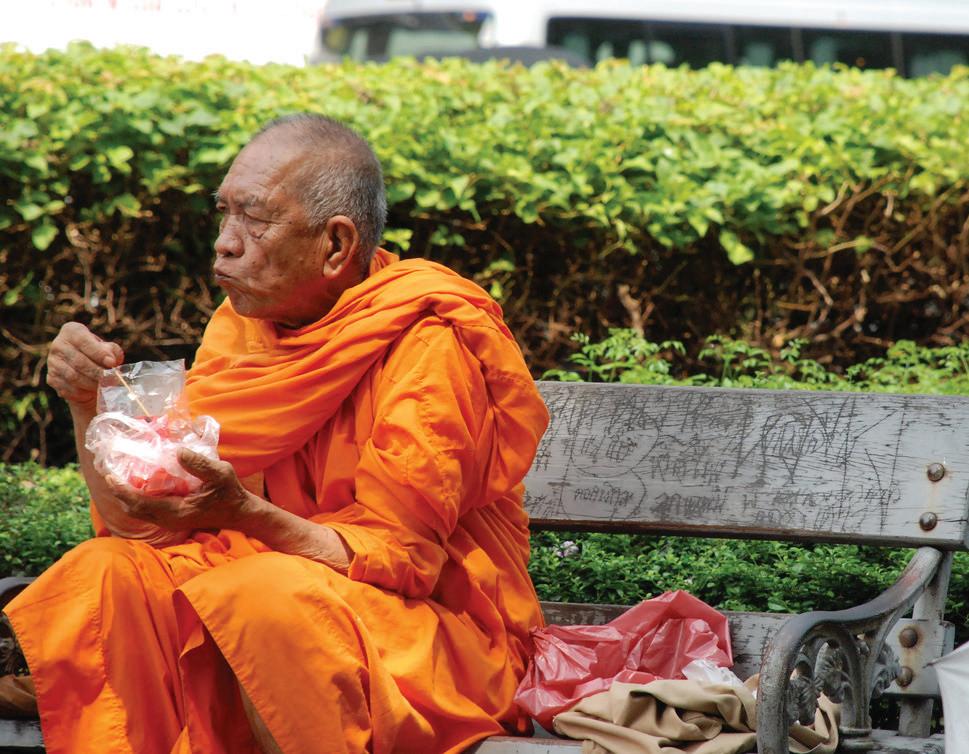
Snacks
Snacking is extremely popular in Thailand, and most people eat several snacks a day. Quick and convenient street foods are widely available in cities. Common snacks include spring rolls, chicken or beef satays, dried shrimp and chili wraps, curry puffs, salads, and coconut-based sweets.
Dessert
Thais often indulge in sugary desserts. Popular Thai sweets include sweet sticky rice with mango in coconut cream syrup, fermented rice pudding, banana pancakes covered in sugar and condensed milk, and egg yolk tarts.
At midday, Thais generally eat a single noodle- or rice-based dish.
Snacking is extremely popular in Thailand, with most people eating several snacks a day.
STREET FOOD
Savory Snacks
PAD THAI
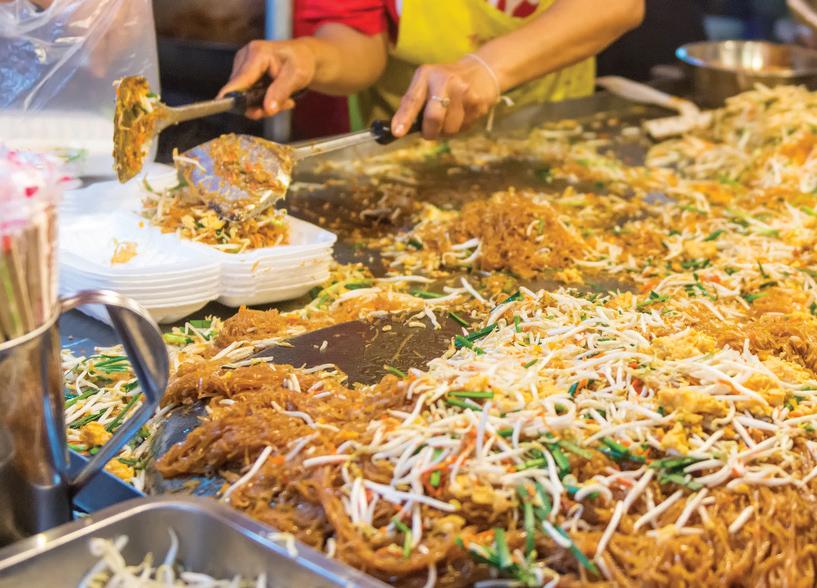
Pad Thai is a quintessential Thai street food dish known for its harmonious blend of sweet, salty, and Thai cuisine and is widely available at street stalls, markets, food courts, and restaurants throughout Thailand. Each vendor often boasts a unique version of the dish, crafted with their own special blend of ingredients and seasonings.
Typically, pad Thai is made with rice noodles stir-fried with tofu, shrimp, or chicken, and mixed with a variety of vegetables such as bean sprouts, green onions,lic, and palm sugar, which gives it its signature taste. The noodles are then topped with crushed peanuts and served with lime wedges and fresh herbs such as sprouts are provided to add extra crunch and heat to the dish.
Pad Thai and Vietnamese cuisines, with the use of stir-frying and rice noodles being central to its preparation. It gained prominence during the mid-20th century as part of a national campaign to promote Thai nationalism and reduce rice consumption. The result is aences and innovative spirit of Thai cuisine.
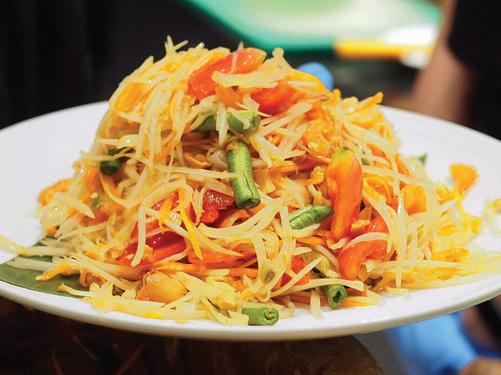
Som tam, also known as green papaya salad, is a vibrant and refreshing dish that is a cornerstone of Thai street food. This salad is a staple in Thai cuisine and can be found at street stalls, markets, food courts, and restaurants across the country. Each vendor often brings their own twist to the dish, creating unique and tantalizing variations.
Typically, som tam is made with shredded green papaya, which provides a crisp and crunchy texture. The papaya is combined with cherry tomatoes, green beans, and sometimes carrots. The salad is then dressed with
and crushed peanuts. Fresh chile peppers are added to give the dish its signature spicy kick, which can be adjusted to taste. Garlic and dried shrimp are also
Som tam is traditionally served with sticky rice and often accompanied by grilled meats or fresh vegetables, which balance the spiciness of the salad. Fresh herbs including cilantro and Thai basil are sometimes added to enhance the aromatic quality of the dish.
The origins of som tam are rooted in the northeastern extend from Lao cuisine. The dish gained widespread making it a beloved part of Thai culinary culture. Today, som tam remains a symbol of the vibrant and
SOM TAM (Green Papaya Salad)
DID YOU KNOW?
No Chopsticks Here
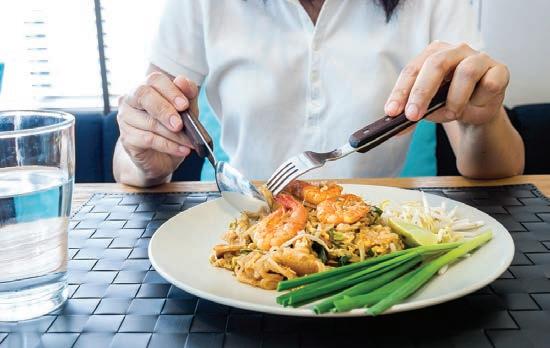
Most Thais eat food with a fork and a spoon, not chopsticks, stemming from a practice brought to the country by King Rama V. Also known as King Chulalongkorn, he had taken a trip through Europe in the 19th century and liked using forks and spoons to eat but not knives, as Thai food was generally made into bite-sized pieces.
His example caught on by the early 20th century, with people around the country forgoing eating with the hands, which was traditional, and imitating the new “royal” style of eating. Spoons in particular work well with the country’s many rice dishes.
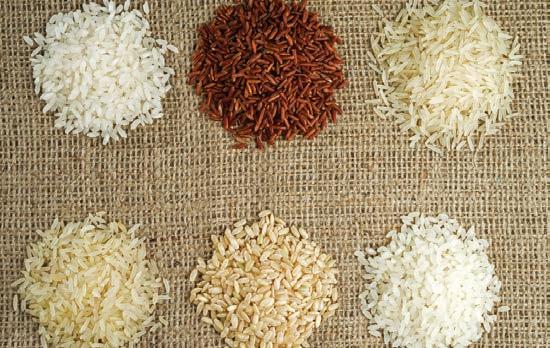
Thailand has more than 20,000 varieties of rice, but only a few are commonly consumed and sold in markets. This results in Thai farmers only growing a few different varieties of rice. Different types of rice have with some types better suited for different meals.
Full Flavored
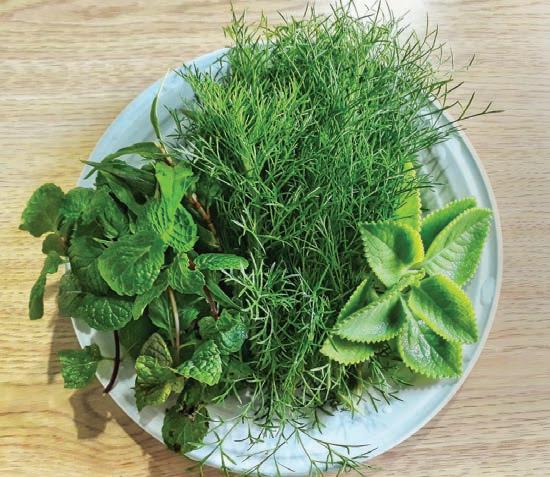
Traditional Thai cooking calls for a range of fresh herbs, spices, and ingredients. The freshness of these components is crucial to Thai cuisine, as it brings out for. Among the popular ingredients that lend Thai food lemongrass, lime, and ginger.
Rice Galore
GAI HOR BAI TOEY
(PANDAN-WRAPPED CHICKEN)
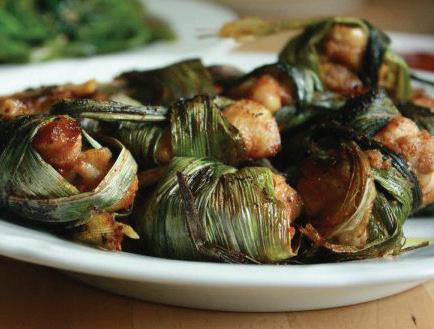
Prep Time: 15 minutes Rest Time: 10 minutes Cook Time: 15 minutes Total Time: 40 minutes
Recipe Servings: 4
Dietary Considerations: Dairy Free, Kosher, Halal
Gai hor bai toey, or pandan-wrapped chicken, is a fragrant and visually striking Thai appetizer made by marinating boneless chicken pieces in a mixture of soy sauce, oyster sauce, garlic, coriander root, and sesame oil, then wrapping them in bai toey (pandan leaves) and deep-frying until golden. The pandan leaves infuse the
Gai hor bai toey is often served with a sweet soy or sesame dipping sauce, making it a popular choice at Thai and showcases the creative use of local herbs such as pandan to elevate simple ingredients into a memorable culinary experience.
SWEET CHILI TOFU
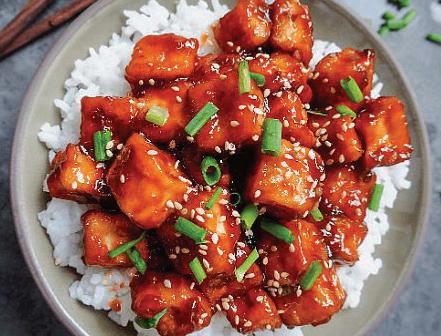
Prep Time: 15 minutes Cook Time: 20 minutes Total Time: 35 minutes
Recipe Servings: 3
Dietary Considerations: Vegetarian
features crispy, golden-fried tofu that is tossed in a glossy, sticky sauce made from Thai sweet chili sauce, soy sauce, garlic, and a touch of lime juice. The sauce coats the tofu, creating a deliciously caramelized exterior while keeping the inside soft and tender. Often garnished with sesame seeds, chopped scallions, or fresh cilantro, sweet chili tofu is a popular vegetarian-friendly dish that pairs beautifully with steamed beloved dish in Thai cuisine, enjoyed by both vegetarians and non-vegetarians alike for its satisfying texture and vibrant taste.
TOM KHA PAK (VEGETABLE
COCONUT SOUP)
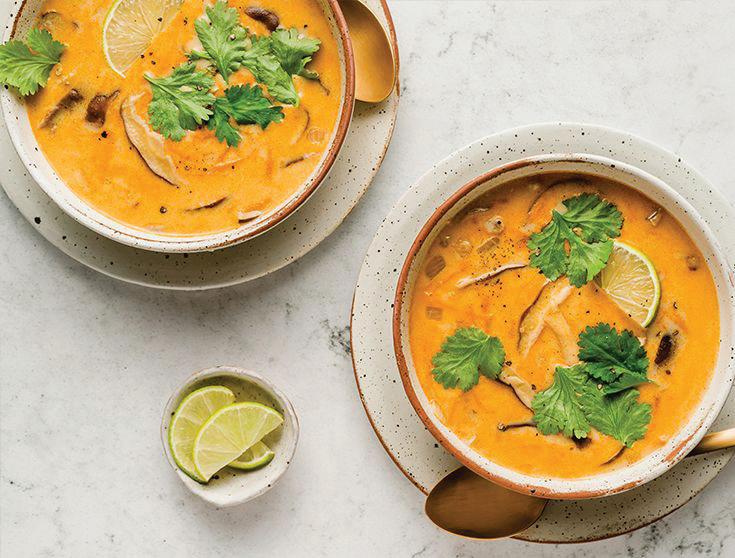
Prep Time: 10 minutes Cook Time: 25 minutes Total Time: 35 minutes
Recipe Servings: 4
Dietary Considerations: Vegetarian
Tom kha pak, or vegetable coconut soup, is a delicious and nourishing Thai dish that combines a medley of tom kha soup features ingredients such as mushrooms, carrots, baby corn, broccoli, and sometimes tofu, simmered in seasoned with lime juice, soy sauce, and a touch of sugar, creating a perfect balance of tangy, savory, sweet, tom kha pak a satisfying plant-based option.
PA TONG KO (FRIED DOUGH STICKS)
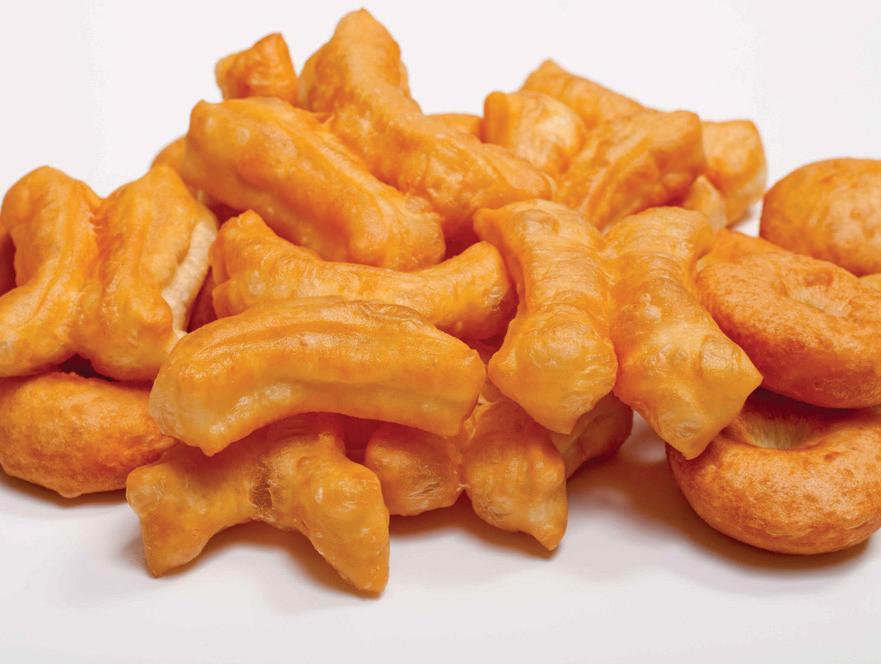
Prep Time: 20 minutes
Recipe Servings: 4–6
Rest Time: 2 hours Cook Time: 20 minutes Total Time: 2 hours 40 minutes
Dietary Considerations: Vegetarian, Vegan, Dairy Free, Kosher, Halal
Pa tong ko are golden, crispy Thai-Chinese fried dough sticks traditionally enjoyed for breakfast, often with sweetened condensed milk, soy milk, or congee. The dish traces its roots to the Chinese youtiao, but Thailand’s version has a lighter, airier texture and is sometimes shaped as X-formed pairs of dough strips stuck together before frying. In Bangkok and across the country, vendors sell these piping hot in the early morning hours. Some upscale versions are served with pandan custard, while others remain simple, crisp, and lightly sweet. Pa tong ko is not just street food—it’s a nostalgic comfort that bridges Chinese and Thai culinary traditions.
LARB (MINCED
MEAT SALAD)
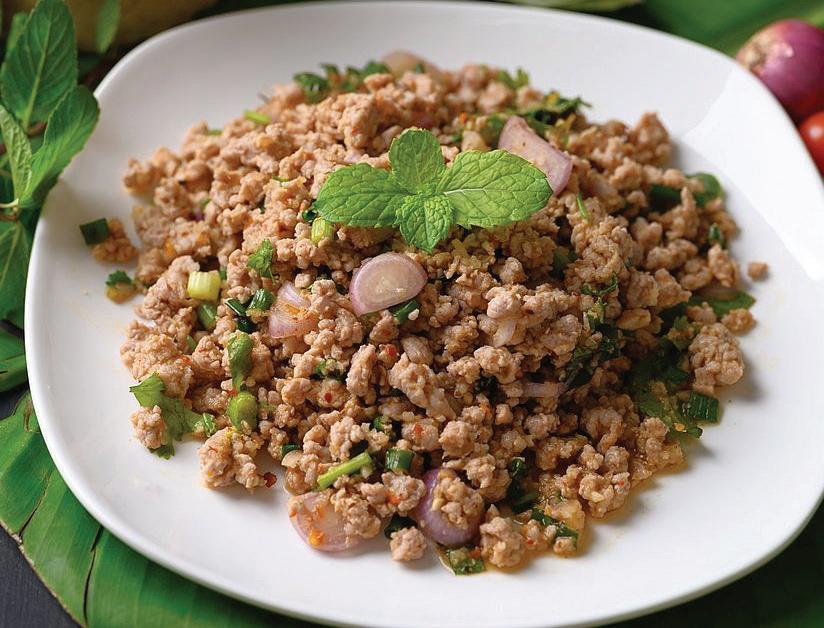
Prep Time: 15 minutes Cook Time: 15 minutes Total Time: 30 minutes
Recipe Servings: 2 Dietary Considerations: Dairy Free
Larb
rice gives larbbage, lettuce, and cucumbers to help balance the heat. Larb -
KHAO PAD GOONG
(SHRIMP FRIED RICE)
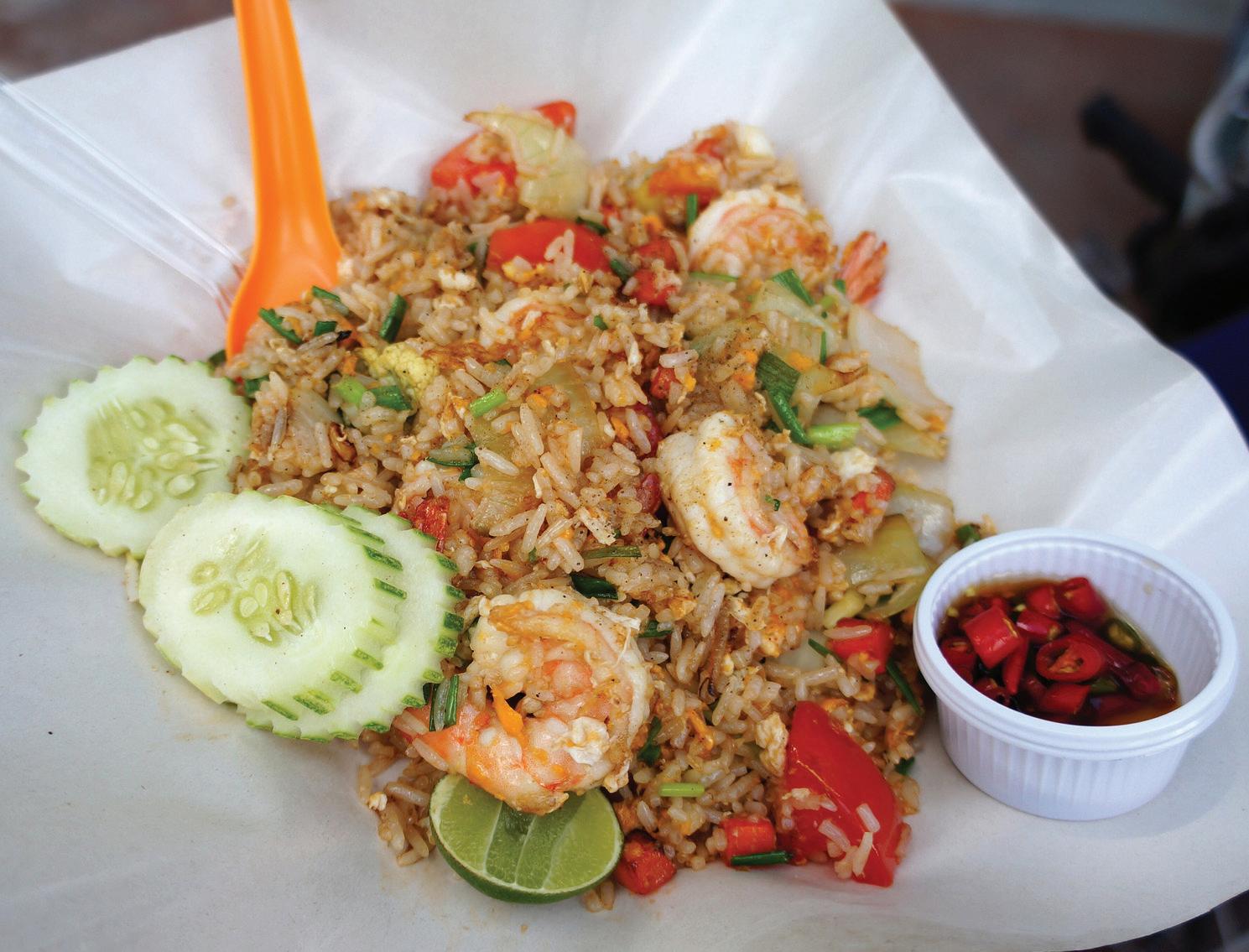
Prep Time: 15 minutes
Recipe Servings: 1
Cook Time: 5 minutes
Total Time: 20 minutes
Dietary Considerations: Dairy Free, Halal
Khao pad, or Thai fried rice, is a popular and versatile dish that captures the essence of Thai comfort food. khao pad is stir-fried with garlic, onions, and vegetables, and often includes proteins such as chicken, goong (shrimp), or crab, though vegetarian versions also are common. Goong is a particularly popular option because the oiliness of the shrimp acts as a coating on the garnished with fresh green onions, lime wedges, and slices of cucumber, khao pad offers a refreshing, custom-
in almost every Thai restaurant and street food stall, khao pad is enjoyed at any time of day and has become a comforting staple both in Thailand and among Thai cuisine lovers worldwide.
SANGKHAYA FAKTONG (PUMPKIN
CUSTARD)
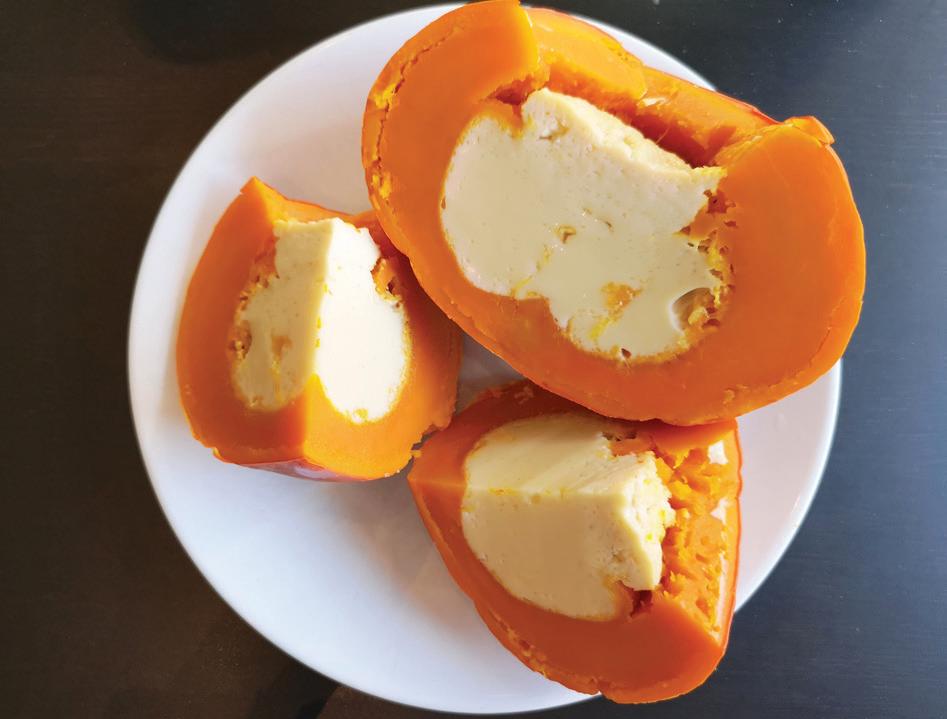
Prep Time: 15 minutes
Recipe Servings: 4
Rest Time: 15 minutes
Cook Time: 45 minutes
Total Time: 1 hour 15 minutes
Dietary Considerations: Vegetarian, Gluten Free, Dairy Free, Kosher, Halal
Sangkhaya faktong, or pumpkin custard, is a creamy dessert that combines the earthy sweetness of faktong (pumpkin) with the silky texture of sangkhaya (coconut custard). This traditional Thai treat is made by hol-
inside, creating a stunning presentation when sliced. The contrast between the soft, subtly sweet pumpkin and the luscious custard makes sangkhaya faktong a favorite dessert during festivals and family gatherings. Served chilled or at room temperature.
SATAY GAI (CHICKEN SATAY)
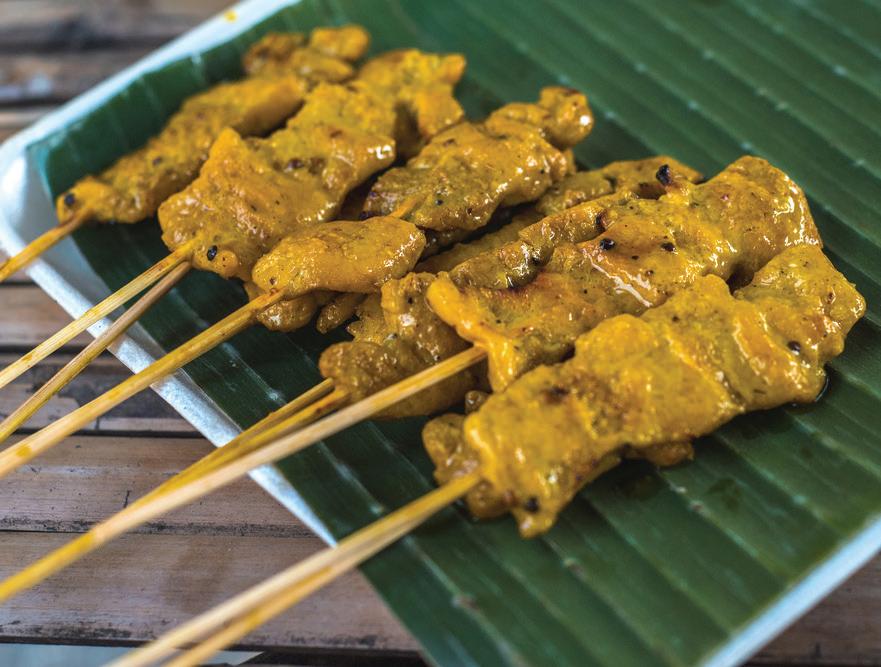
Prep Time: 15 minutes Rest Time: 1 hour Cook Time: 10 minutes Total Time: 1 hour 25 minutes
Recipe Servings: 4
Dietary Considerations: Gluten Free, Dairy Free, Kosher, Halal
Satay gai, or chicken satay, is a popular Thai street food and appetizer featuring skewered, marinated chicken mixture of coconut milk, curry powder, turmeric, garlic, and coriander, giving it a deep yellow color and a
spicy peanut sauce that includes coconut milk and red curry paste. Though it has roots in Indonesian cuisine, satay gai has become an established part of Thailand’s culinary landscape, especially at markets and festivals, where its smoky aroma and crowd-pleasing taste make it an enduring favorite.
GARLIC
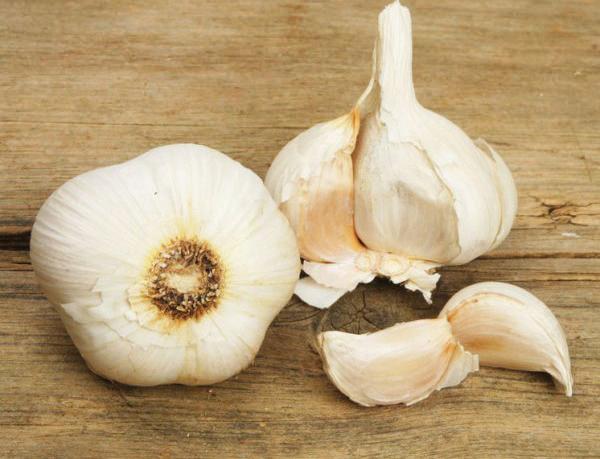
Description
Allium sativum is a perennial plant that belongs to the Alium genus and is closely related to onions, leeks, shallots, chives, and rakkyo (Japanese shallot or Japanese scallions). The garlic plant’s bulbous head of individual cloves are clustered around a hard stem, from which protective skin that becomes paper-like when dried.
Origin
Garlic originated in Central Asia from the wild variety Allium longicuspis and has been used by humans for food and medicinal purposes for thousands of years.
Varieties
There are two subspecies of A. sativum: A. sativum var. ophioscorodon (hard-necked garlic) and A. sativum var. sativum (soft-necked garlic). There are 10 major varieties and hundreds of cultivars.
Preparations
Garlic is typically dried and then cooked by pan-frying, smoking, or grilling. It is sold as whole cloves as well as in minced, granulated, and powdered forms. Garlic pairs well with meat, tomato, onion, ginger, eggplant, pork, and oils, and is used in a wide range of curries, stir-fries, aiolis, soups, and stews.
Season
Dried garlic, garlic powder, and jarred minced garlic are available year-round. Garlic has a long growing season. It is planted in the fall, about six weeks be-
In warmer climates, it can be planted in spring and harvested in fall.
Did You Know?
• The word garlic comes from the Old English garleac, a compound word of gar, meaning “spear” and referencing its distinctive shape, and leac meaning “leek.”
• In the Bible, the Israelites led out of slavery by Moses complained about the lack of garlic in the Promised Land.
• China is the world’s largest garlic producer, with around 80 percent of the world’s crop, followed by India, South Korea, Egypt, and Russia, with the United States in ninth place.
• To remove the strong smell of garlic from one’s hands after cooking, one can simply rub them on a stainless-steel object under cold water, as the sulfuric compounds bind easily to metal.
Cooking garlic softens its spiciness, replacing it with an earthy sweetness.
Garlic is rich in vitamin C, pyridoxine, manganese, and phosphorus. It is also a good source of thiamine and pantothenic acid, as well as calcium, iron, and zinc. Garlic contains several sulfur compounds, including allicin, an oily, colorless substance that gives
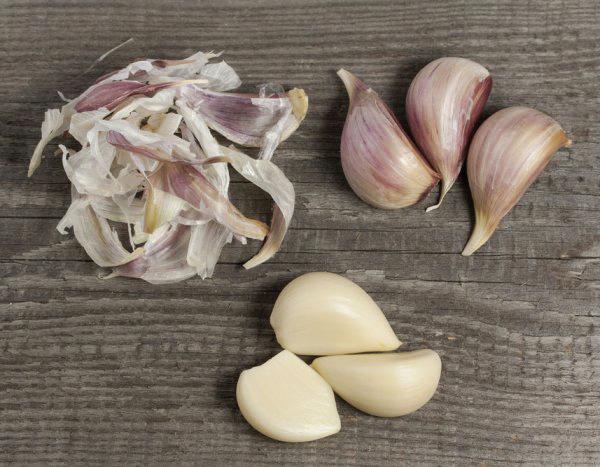
ABOUT WORLD TRADE PRESS
World Trade Press is a publishing and information products company specializing in country-based information company’s mission is to strengthen mutual understanding across cultures by lowering the information barriers that prevent individuals and organizations from succeeding in the international arena. World Trade Press clients include academic and public libraries, universities, global businesses, government agencies, global logis-
Databases
World Trade Press has developed and maintains more than a dozen large-scale online databases of country and city information covering business, culture, food, import/export, local living, and travel for 174 world countries and 201 world cities.
Physical Books, Atlases, and Maps
World Trade Press has published multiple editions of more than 100 physical reference books, country business guides, books for international trade and logistics, world atlases for travel and logistics, and world and country wall maps.
Professional Reports and E-Books
World Trade Press has developed and maintains more than two dozen professional-level country e-reports and e-books for each of 174 countries. These products cover topics such as business culture, cost of living, demographics, education, environment, holidays and festivals, government, money and banking, music, quality of life, religion, security, social indicators, and more.
Contributors
All World Trade Press products—from our databases and e-content reports to our physical books, maps, and atlases—are created through the collaboration of a dedicated internal staff of researchers, writers, editors, and cartographers and more than 100 external subject-matter experts to create world-class content in theel. To view a partial list of contributors to titles in The Global Kitchen series, go to www.TheGlobalKitchen. com/contributors.html.
Learn more about World Trade Press and its products at www.WorldTradePress.com.

Check
